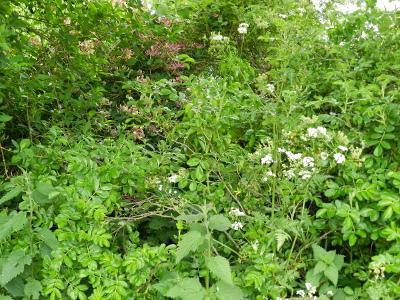
 Hedgerows are one of the most quintessential backdrops of the British countryside. Found lining roads, splitting up fields and bordering areas of woodland, parks and gardens you cannot go far in the UK without stumbling across many fine examples of these wonderful collections of plants.
Hedgerows are one of the most quintessential backdrops of the British countryside. Found lining roads, splitting up fields and bordering areas of woodland, parks and gardens you cannot go far in the UK without stumbling across many fine examples of these wonderful collections of plants.Typically wild hedgerows are made up from numerous different species of plants from tree and bush species, to flowering plants and so-called weeds, the sheer diversity of plants in hedgerows are what makes them so spectacular to look at throughout the year. However, there is more to hedgerows than just being large collections of border plants as they are also vital to local wildlife.
The large variety of plants in hedgerows provide food to countless animal species from birds and small mammals, to insects and even people back in the day, hedgerows make up one of nature's biggest larders and the often large size means that they are able to successfully support all of these species at once. Indeed, even the fact that they attract so many small species that are looking for food ensures that larger predatory species are also present.
The often dense and extensive nature of hedgerows also means that they are a vital source of security for many species. Birds nest there, insects are able to forage and hibernate in the winter unseen and mammals on the ground are able to burrow and hide amongst them. Even large mammals like deer, foxes and badgers will seek out holes in the lower parts of the hedge in which they can enter and hide from potential danger.
Although hedgerows in parks and gardens are normally more uniform and manicured than those found in wilder areas such as woodland, they still provide vital food and shelter for local wildlife. Most hedgerows found in our gardens are usually made up of a single plant species so it is always advisable to allow other plants such as nettles and rosehips to grow and flourish in order to make your hedgerow as productive as possible.

